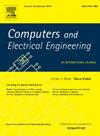Anonymous quantum-safe secure and authorized communication protocol under dynamic identities for Internet of Drones
IF 4.9
3区 计算机科学
Q1 COMPUTER SCIENCE, HARDWARE & ARCHITECTURE
引用次数: 0
Abstract
The Internet of Drones (IoD) refers to the integration of unmanned aerial vehicles (UAVs) into the broader Internet of Things (IoT) ecosystem. This connection enables a wide range of applications and uses. An authenticated key agreement for the Internet of Drones (IoD) allows mobile device owners to establish a connection with a group of drones remotely for safe and effective services including supply delivery, sending photos and data from surveillance, and other communication services. The exchange of sensitive information through open channel, such as the internet, comes with challenges in terms of data protection and authentication. The invention of Shor’s technique, though, creates complications for authorized and secure communication in the era of highly advanced quantum computers. Therefore, we have proposed a secure authenticated key agreement the Internet of Drones (IoD) based on lattice assumption called ”Ring Learning With Error” on lattices. The RLWE operates on algebraic structures known as polynomial rings, which permits faster and space-efficient cryptographic operations. This efficiency is especially beneficial for limited storage devices (IoD/IoT). This framework is able to withstand quantum attacks, and it is suitable for low computation devices. This protocol provides anonymous communication for both user and drone. Additionally, this protocol ensures user privacy, from breaking session key security, or from withstanding impersonation attacks, and enables mutual authentication, and it utilizes dynamic identities and ensures freshness of messages. The performance analysis indicates that the proposed system performs better than existing state-of-the-art solutions when tested on benchmark datasets using various evaluation metrics.
无人机互联网动态身份下的匿名量子安全授权通信协议
无人机互联网(IoD)是指将无人驾驶飞行器(UAV)整合到更广泛的物联网(IoT)生态系统中。这种连接实现了广泛的应用和用途。无人机互联网(IoD)的认证密钥协议允许移动设备所有者远程与一组无人机建立连接,以提供安全有效的服务,包括供应品交付、发送监控照片和数据以及其他通信服务。通过互联网等开放渠道交换敏感信息,在数据保护和身份验证方面存在挑战。不过,肖尔技术的发明为高度发达的量子计算机时代的授权和安全通信带来了复杂性。因此,我们提出了一种基于网格假设的无人机互联网(IoD)安全认证密钥协议,称为网格上的 "带错环学习"(Ring Learning With Error)。RLWE 在被称为多项式环的代数结构上运行,从而允许更快、空间效率更高的加密操作。这种效率尤其适用于有限的存储设备(物联网/物联网)。该框架能够抵御量子攻击,适用于低计算设备。该协议可为用户和无人机提供匿名通信。此外,该协议还能确保用户隐私,防止破坏会话密钥安全或抵御冒名顶替攻击,实现相互验证,并利用动态身份,确保信息的新鲜度。性能分析表明,在使用各种评估指标对基准数据集进行测试时,拟议系统的性能优于现有的最先进解决方案。
本文章由计算机程序翻译,如有差异,请以英文原文为准。
求助全文
约1分钟内获得全文
求助全文
来源期刊

Computers & Electrical Engineering
工程技术-工程:电子与电气
CiteScore
9.20
自引率
7.00%
发文量
661
审稿时长
47 days
期刊介绍:
The impact of computers has nowhere been more revolutionary than in electrical engineering. The design, analysis, and operation of electrical and electronic systems are now dominated by computers, a transformation that has been motivated by the natural ease of interface between computers and electrical systems, and the promise of spectacular improvements in speed and efficiency.
Published since 1973, Computers & Electrical Engineering provides rapid publication of topical research into the integration of computer technology and computational techniques with electrical and electronic systems. The journal publishes papers featuring novel implementations of computers and computational techniques in areas like signal and image processing, high-performance computing, parallel processing, and communications. Special attention will be paid to papers describing innovative architectures, algorithms, and software tools.
 求助内容:
求助内容: 应助结果提醒方式:
应助结果提醒方式:


